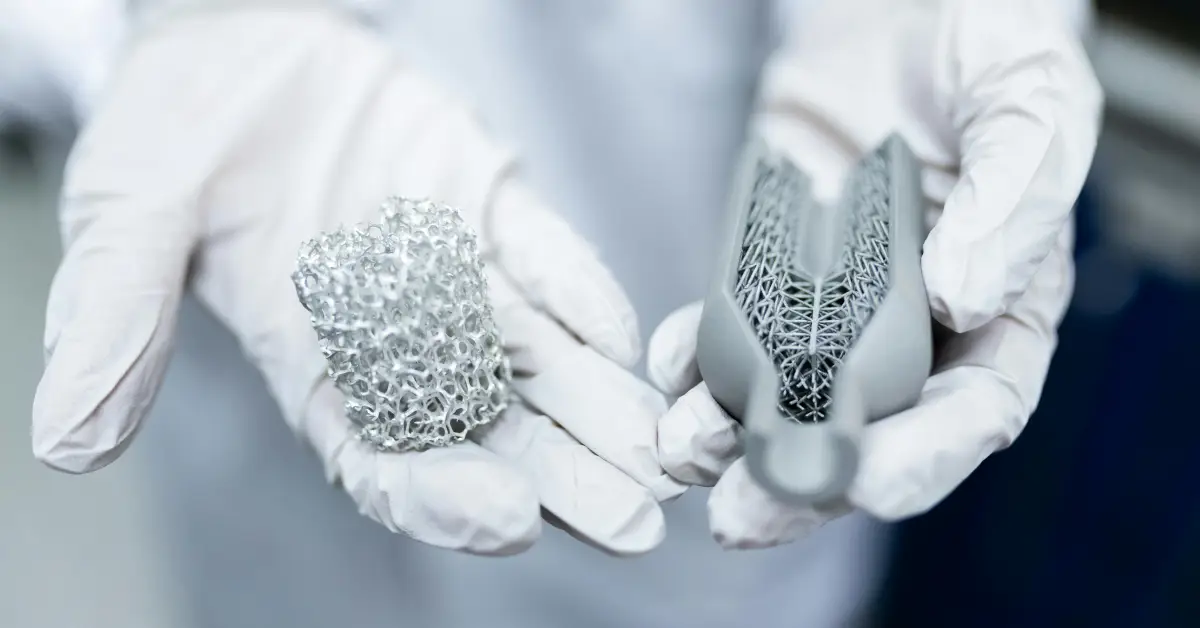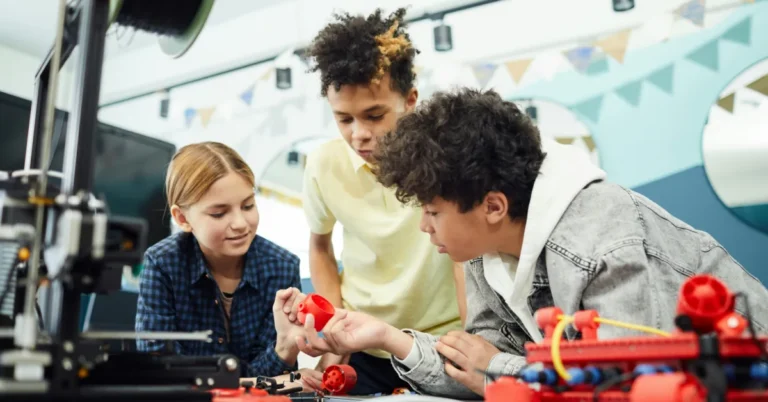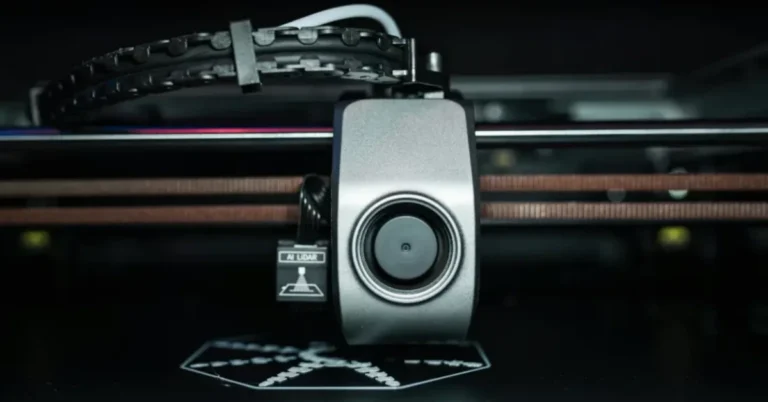Introduction: The Everyday Magic of 3D Printing
In Part 1 of this series, we explored the fascinating evolution of 3D printing, from its origins in the 1980s to its current role as a transformative technology in 2025. We delved into the history of 3D printing, the different technologies that power it (like FDM, SLA, and SLS), and how it enables creators to bring intricate designs to life—from functional home decor to artistic masterpieces.
Now, in Part 2, we’ll shift our focus to the real-world impact of 3D printing. Imagine a bathroom where a T-Rex Toothbrush Holder not only adds a playful touch but also encourages children to develop healthy brushing habits. This isn’t just a product; it’s an example of how 3D printing turns everyday challenges into opportunities for innovation, personal expression, and even positive behavioral change.
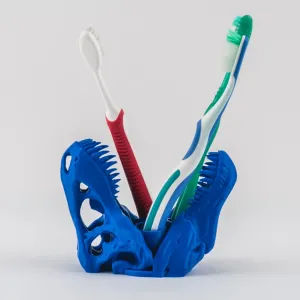
From solving small household problems to enabling boundless creativity, 3D printing is quietly revolutionizing the way we live. Let’s dive in and discover how this technology is transforming our everyday lives, one layer at a time.
2. 3D Printing in Everyday Life: Beyond Prototypes
When 3D printing first emerged, it was primarily used for prototyping in industrial settings. But today, it has evolved into a tool that solves everyday problems with customized solutions. From home organization to personalized gifts, 3D printing is making life more functional—and a lot more fun.
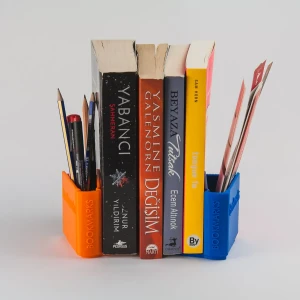
Take the Book Shaped Bookend, for example. At first glance, it’s a stylish way to display your favorite novels. But open it up, and you’ll find hidden compartments for pens, bookmarks, or even small notes. This clever design isn’t just practical; it’s a testament to how 3D printing can turn ordinary objects into multi-functional tools tailored to your needs.
The broader trend here is personalization. Whether it’s a custom phone stand that fits your desk perfectly or a unique planter that matches your home decor, 3D printing allows us to create items that are as individual as we are. No longer limited to mass-produced products, we can now design and own pieces that reflect our personality and lifestyle.
This shift from generic to personalized is reshaping how we think about everyday objects. With 3D printing, the possibilities are endless—and they’re all within reach.
3. Creative Freedom: Hobbies and Artistic Expression
3D printing isn’t just about solving practical problems—it’s also a gateway to boundless creativity. For hobbyists and artists, this technology opens up a world of possibilities, allowing them to bring their wildest ideas to life with precision and ease.
Consider the DC Vixen Necklace & Anansi Totem. This intricate piece of wearable art isn’t just a necklace; it’s a statement. Inspired by mythology and pop culture, it showcases how 3D printing can bridge the gap between cosplay and everyday fashion. With its detailed design and customizable elements, it’s a perfect example of how 3D printing empowers creators to turn their passions into tangible, wearable masterpieces.
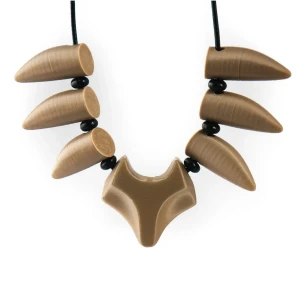
But it’s not just about fashion. From tabletop gaming miniatures to custom guitar picks, 3D printing is revolutionizing hobbies by making high-quality, personalized items accessible to everyone. Artists can experiment with complex geometries and unique materials, while hobbyists can design tools and accessories that perfectly suit their needs.
The beauty of 3D printing lies in its ability to democratize creativity. You don’t need a factory or a massive budget to create something extraordinary—all you need is an idea and a 3D printer. Whether you’re a seasoned artist or a curious beginner, this technology invites you to explore, experiment, and express yourself in ways that were once unimaginable.
4. Education & Learning: Hands-On Innovation
3D printing is revolutionizing education by turning complex concepts into hands-on learning experiences. It’s not just about understanding theories—it’s about applying them to create something real, functional, and exciting.
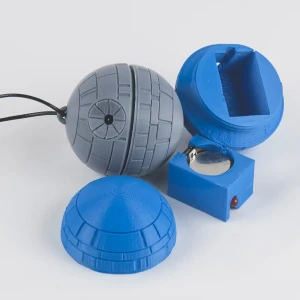
Take the Star Wars Death Star Ornament, for example. This isn’t just a decorative piece; it’s a mini engineering marvel. Designed with a twist mechanism that activates an LED light, it combines mechanical design, electronics, and creativity into one project. Students can explore how rotational forces work, learn about basic circuitry, and even dive into 3D modeling to understand how each component fits together.
Projects like this are perfect for STEM education. They challenge students to think critically about design and functionality while encouraging collaboration and problem-solving. For instance, how does the twist mechanism trigger the LED? What adjustments are needed to ensure the parts move smoothly? These are the kinds of questions that turn a simple ornament into a valuable learning tool.
Beyond STEM, the Death Star Ornament also sparks creativity and storytelling. Students can delve into the world of Star Wars, exploring its themes of innovation and resilience while creating something tangible. It’s a reminder that learning isn’t just about equations and formulas—it’s about imagination and discovery.
By integrating 3D printing into education, we’re not just teaching students how to use technology; we’re inspiring them to think bigger, dream bolder, and create fearlessly.
5. Sustainability: Reducing Waste, One Print at a Time
In a world increasingly focused on sustainability, 3D printing stands out as a game-changer. Unlike traditional manufacturing methods, which often involve cutting away material and generating significant waste, 3D printing is an additive process—building objects layer by layer and using only the material needed. This approach not only reduces waste but also opens the door to eco-friendly innovations.
A great example of this is the Twisted Heart Planter. Made from biodegradable PLA (polylactic acid), this planter is not just a beautiful piece of home decor; it’s a statement about sustainable living. PLA is derived from renewable resources like cornstarch or sugarcane, making it a greener alternative to traditional petroleum-based plastics such as PET (polyethylene terephthalate).
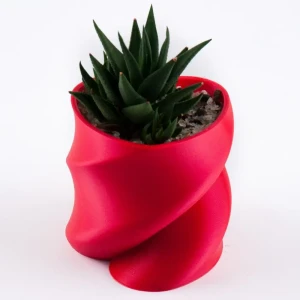
But what makes PLA truly remarkable is its biodegradability. Under the right conditions—such as in an industrial composting facility—PLA can break down in as little as 3 to 6 months. In contrast, PET plastics can take hundreds of years to decompose, often breaking down into microplastics that harm ecosystems. While PLA’s decomposition in home composting or natural environments is slower (typically 12 to 24 months), it still represents a significant step forward in reducing long-term environmental impact.
Beyond materials, 3D printing supports sustainability through on-demand production. Items are only created when needed, reducing overproduction and excess inventory—two major contributors to waste in traditional manufacturing. For example, instead of mass-producing thousands of phone cases, 3D printing allows for custom, made-to-order designs that minimize waste and energy consumption.
Additionally, 3D printing promotes a “repair, don’t replace” culture. Instead of discarding a broken item, you can simply print a replacement part, extending the product’s lifespan. This approach not only saves money but also reduces the demand for new resources, further lowering our environmental footprint.
By combining eco-friendly materials like PLA, efficient production methods, and a focus on longevity, 3D printing is helping us rethink how we create and consume. It’s proof that innovation and sustainability can go hand in hand—one layer at a time.
The Future: 3D Printing in Tomorrow’s World
As 3D printing continues to evolve, its potential to shape the future is becoming increasingly clear. From revolutionizing healthcare to enabling sustainable living, this technology is poised to transform industries and redefine what’s possible.
One of the most promising areas for 3D printing is healthcare. Imagine a world where organs can be 3D-printed on demand, eliminating the need for donor waiting lists. While this may sound like science fiction, bioprinting—a specialized form of 3D printing—is already making strides in creating tissues and even functional organs. Researchers are experimenting with bio-inks made from living cells to print skin, cartilage, and blood vessels. In the near future, this technology could revolutionize transplants and regenerative medicine, offering hope to millions of patients worldwide.
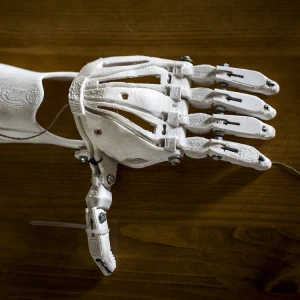
But the impact of 3D printing doesn’t stop there. In the field of prosthetics, customized 3D-printed limbs are already changing lives. Unlike traditional prosthetics, which can be expensive and time-consuming to produce, 3D-printed versions are affordable, lightweight, and tailored to the individual’s needs. This accessibility is particularly transformative in developing countries, where medical resources are often limited.
Beyond healthcare, 3D printing is also driving innovation in construction. Large-scale 3D printers are being used to build affordable housing in record time, addressing global housing shortages and reducing construction waste. Similarly, in space exploration, NASA and other organizations are exploring how 3D printing can create tools, spare parts, and even habitats on other planets, reducing the need for costly and logistically complex supply missions.
The future of 3D printing is not just about technology—it’s about solving real-world problems and improving lives. As this technology becomes more advanced and accessible, it will continue to empower individuals and industries alike, turning today’s bold ideas into tomorrow’s reality.
7. Conclusion: Empowering Your World with 3D Printing
3D printing is more than just a technological innovation—it’s a gateway to creativity, problem-solving, and a more sustainable future. From transforming healthcare with bioprinted tissues to enabling on-demand manufacturing that reduces waste, this technology is reshaping industries and empowering individuals to bring their ideas to life.
One of the most inspiring aspects of 3D printing is its ability to preserve and celebrate cultural heritage. Take the Aztec Death Whistle, for example. This ancient artifact, known for its haunting sound and intricate design, has been recreated using 3D printing, allowing people to experience a piece of history in a tangible way. It’s a powerful reminder of how technology can bridge the past and the future, preserving traditions while inspiring new forms of artistic expression.
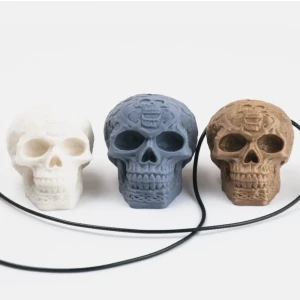
But the impact of 3D printing goes far beyond cultural preservation. It’s revolutionizing education by turning abstract concepts into hands-on learning experiences. It’s driving sustainability by promoting eco-friendly materials and reducing waste. And it’s opening doors to innovation in fields like healthcare, construction, and even space exploration.
As 3D printing continues to evolve, its potential is limitless. Whether you’re an engineer, an artist, or simply someone who loves to create, this technology offers endless opportunities to explore, experiment, and innovate. The future is not just something we wait for—it’s something we can build, layer by layer.
So, what will you create? The possibilities are as vast as your imagination.
